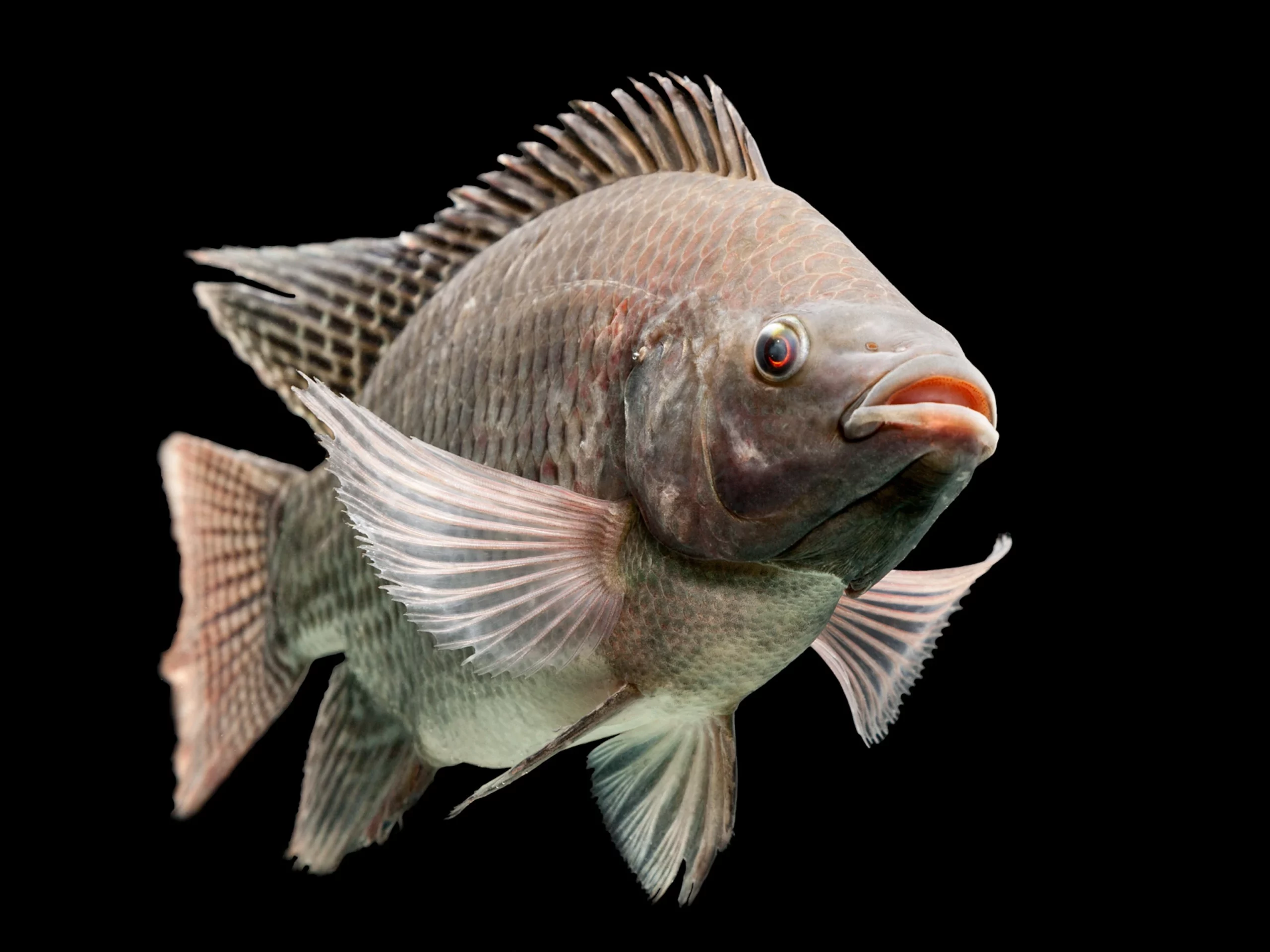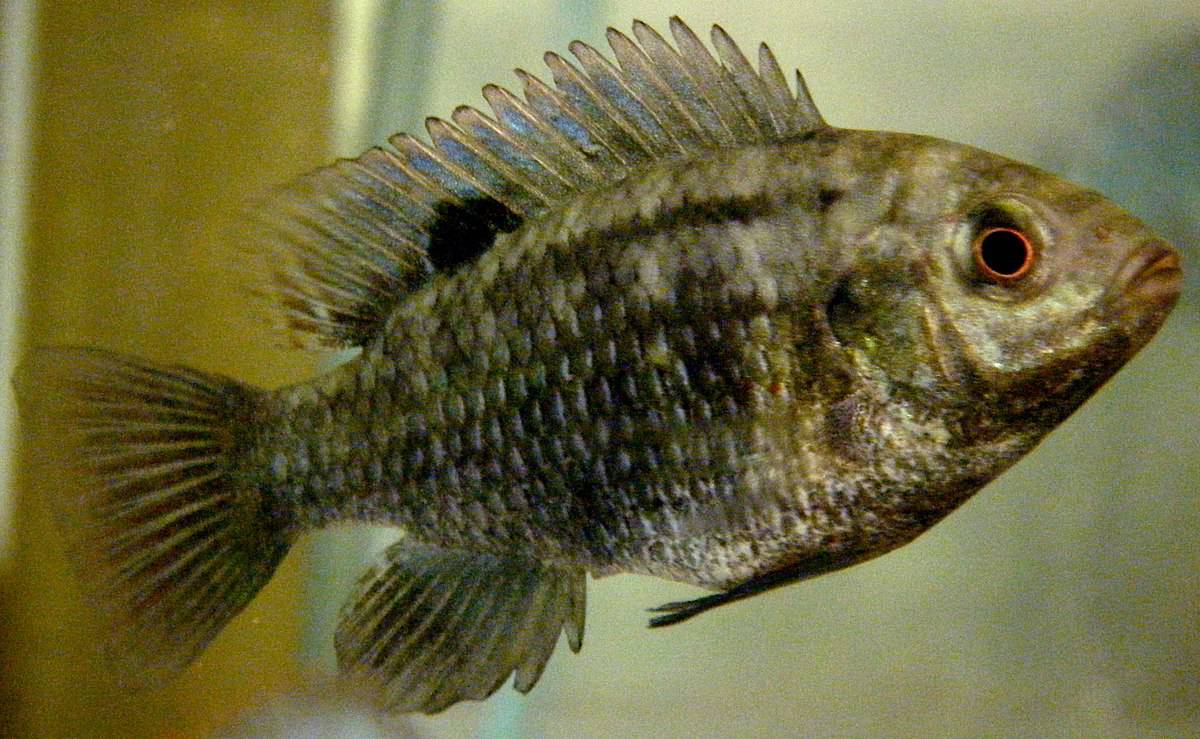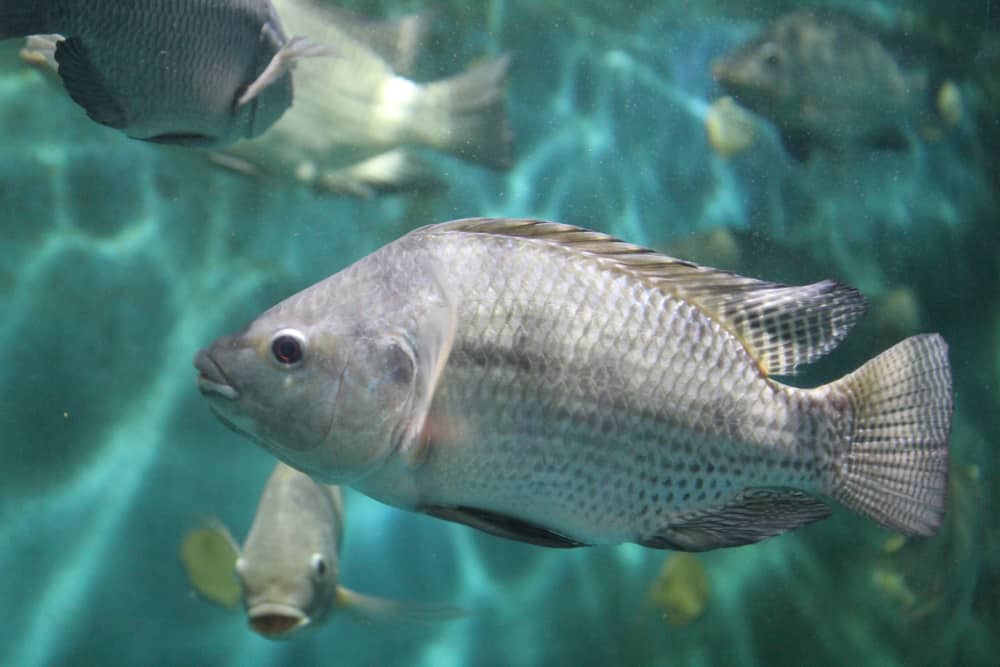Tilapia is a prevalent type of fish enjoyed worldwide due to its easy preparation, cheap production, and mild taste. In fact, tilapia is the fourth most consumed type of seafood in the United States.
However, there have been some concerns about what tilapia eat regularly. Certain headlines have categorized them as “poop fish” because they can consume animal waste. But, the reality of the situation is much more complicated than that.
So, what do tilapia actually eat? Are they safe for humans to consume? If you want the answers to these questions, keep on reading!
In this article, we’ll thoroughly examine the origins and diet of tilapia. We’ll also determine whether they are safe and healthy fish to eat, as well as how to make bait for catching them
What Is a Tilapia?
Tilapia is a type of freshwater fish commonly found in lakes, ponds, rivers, and shallow streams. Tilapia’s history can be traced back to Ancient Egypt, where one of its subspecies, Nile tilapia, symbolized rebirth.
Tilapia require warm water to survive and can’t live in temperate climates. Once they invade a natural habitat, either by accident or intentionally, they multiply rapidly and can significantly disrupt native ecosystems. In certain parts of the world, including the United States and Australia, tilapia is such an invasive species that it’s classified as noxious fish.
Due to its popularity and cheap production, tilapia is one of the most common fish to farm. There are numerous tilapia farms worldwide, with the highest exports coming from China, Indonesia, and Egypt.
Is Tilapia a Healthy Fish to Eat?

The short answer is yes; tilapia is a perfectly safe and healthy fish to consume. There are two widespread misconceptions regarding tilapia. Firstly, tilapia has been labeled as “poop fish”. Secondly, it has been described as “less healthy than bacon or donuts”. Let us examine these statements and try to debunk them.
“Poop Fish”
Tilapia is an inherently herbivorous fish, which means it follows a plant-based diet. Wild tilapia usually feed off of algae or zooplankton. But, farmed tilapia is usually given meals made from soybean or corn. Regardless, when food is scarce, tilapia will consume anything to survive, including animal waste.
The characterization of “poop fish” originates from some Asian tilapia farms that would feed their tilapia with feces of livestock such as poultry and sheep. However, this practice is not prominent in Asia, and it’s also non-existent in the United States, where the water of tilapia farms is carefully monitored.
Naturally, the idea that such a common fish that humans consume can feed off poop is concerning. Nonetheless, it doesn’t equate to you eating poop. But, it can still be dangerous, as these fish have a higher chance of causing bacterial infections.
So, if you want to avoid the chance of this, just shop for tilapia that is farmed in the United States rather than imported from Asia.
“Worse Than Fast Food”
Other than “poop fish”, tilapia has also been deemed unhealthy and “worse than bacon or donuts”. This misconception can be traced back to a research report carried out at Wake Forest University and published in the Journal of the American Dietetic Association in 2008.
In this research, scientists wanted to determine the ratio of omega-6 fatty acids to omega-3 fatty acids in several different fish. Omega-3s are very beneficial for humans, as they can reduce inflammation, stop blood clots and decrease irregular heart rhythms.
On the contrary, omega-6s have been linked to increased inflammation, which contributes to conditions like diabetes and heart disease. Therefore, if a fish has a low ratio of omega-6 to omega-3 fatty acids, it’s considered healthy for humans.
The research found that farmed tilapia that eat corn and soy, which are full of omega-6s, are not as healthy as wild tilapia that eat algae which are high in omega-3s. In fact, farmed tilapia have a higher inflammation potential than particular fast food like pork bacon and hamburgers.
Therefore, scientists concluded that if you exclude all other nutrients, tilapia grown on farms is unhealthy and worse than eating fast food. While this statement does seem concerning, you can’t overlook the other nutrients that fish like tilapia have or all the unhealthy aspects of hamburgers and bacon.
These fast foods are full of saturated fat, sugar, and cholesterol and significantly contribute to obesity and heart disease, which are prevalent in the United States. Not to mention that tilapia’s omega-6 fatty acids reduce LDL (bad cholesterol) and increase HDL (good cholesterol).
In the end, you shouldn’t avoid eating tilapia, as the concerns surrounding them are just misunderstandings. They can benefit your health, just like any other fish.
Also, since tilapia’s diet consists of food sources that are low on the food chain, there are no concerns regarding mercury poisoning. That’s another health benefit compared to other carnivorous fish like tuna or swordfish.
What Do Tilapia Eat?

As we mentioned above, tilapia are herbivores, meaning they essentially eat plants. Tilapia are also commonly used to reduce the growth levels of certain plants like algae in small bodies of water.
They don’t require a high amount of protein; their diet also depends on their developmental stage. Younger tilapia up to 1.5 inches long usually eat detritus, algae, or bacteria that float on the top of the water. Adult tilapia can have a much more varied diet. Here are some of the things that tilapia eat:
Algae
Algae is one of the favorite foods of wild tilapia. You’ll often see these fish-eating algae that grow on underwater surfaces. Algae is also one of the reasons that tilapia are found in shallow bodies of water like ponds or lakes. People usually introduce them to these ecosystems to reduce algae growth.
Aquatic Plants
In addition to algae, tilapia also eat many types of aquatic plants. They can eat every part of underwater plants like the roots, stems, and leaves. Some of its favorite aquatic plants to eat include: filamentous algae, water lilies, and other rooted plants.
Pellet Food
Pellet food is the most common type of food that farmed tilapia eat. It’s made by extrusion cooking and contains up to 40% protein that is usually soy-based.
Pellets for tilapia come in several different sizes based on the developmental stage of the fish. It’s recommended to use pellets that float on the surface instead of those that sink to the bottom to have easier control over feeding.
Earthworms
Earthworms are a very common food supplement that farmers use in addition to pellets. The best variety is small red earthworms that can contain up to 60% protein. Tilapia can also eat other worms, like maggots, but they’re not ideal due to their high-fat percentage.
Duckweed
Another popular food source for tilapia is duckweed. This type of water plant is often used as supplementary food because it is both cheap and healthy for tilapia since it contains vitamin C. But, you should know that duckweed is considered an invasive plant and should be used in moderation to avoid disturbing the ecosystem.
How Do You Make Bait for Tilapia?
If you want to fish for tilapia, you’ll need to make some bait for them. Remember that tilapia are herbivorous fish, which makes traditional artificial bait not suitable for them. Here are some of the best options for tilapia bait:
Peas
Peas are an excellent tilapia bait for a few reasons. You can find them in any supermarket, and they’re usually very cheap. Also, their size is ideal for tilapia to eat in one bite. You can use canned or frozen peas, but frozen is the best since they stay hooked for longer.
Corn
Corn is one of the most popular tilapia bait used by fishers. It’s a type of food that tilapia eat regularly, and you can find many different versions on the market. Some people prefer to use feed corn, imitation corn, or flavored corn as bait.
However, the most popular and effective types of corn bait are canned sweet corn and frozen corn. Not to mention that corn can be used as bait for other fish such as trout and catfish.
Earthworms
Since tilapia like to eat earthworms that look like small invertebrates, these worms can also be used as bait when fishing for tilapia. You can buy these online or in fishing supplies stores. You can also get them using the method of vermicomposting.
Bread Balls
If you’re in a pinch and can’t find any other bait mentioned, you can get by with some bread balls. Just take small pieces of bread and shape them into tiny balls. Then you can freeze them for some time, making them easier to hook and stay hooked for longer.
Conclusion
All in all, tilapia fish are great fish to eat. Their diet mainly consists of water plants, algae, and phytoplankton, so they’re harmless to humans. Also, they are easy and cheap to farm. That’s why there are numerous aquacultures and fish farms throughout the world. If you’ve never had tilapia, you should try it. It might end up being your new favorite type of fish!
